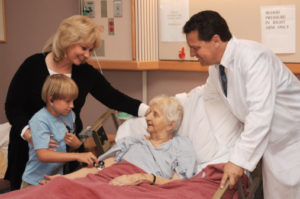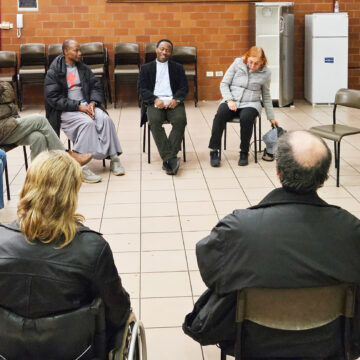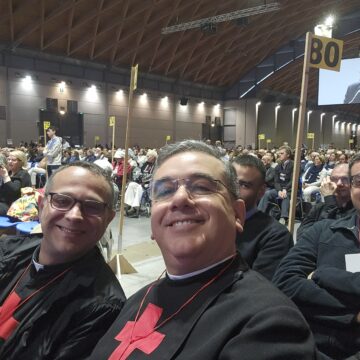Luca Perletti
A Short History
The history of palliative care in Italy is rather recent, the victim – probably – of the feeling of omnipotence of medicine whose objective is the defeat of illness and of cultural prejudices, such as resistance to addressing the subject of the end of life and death. Whereas in North Europe hospices were spreading, this cultural and philosophical model was held to be untenable and impracticable in the Mediterranean basin. It was only in the last decade of the last century that palliative care began to receive institutional recognition by the government of Italy, thereby helping to make palliative care known about to public opinion. In the year 2010, the time had come to recognise palliative care. By law n. 38/2010 of 15 March 2010, indeed, the right was upheld of citizens to have access to palliative care and to the treatment of pain at the level of essential care.
Elements of Innovation
At the heart of palliative care is the patient and his or her family who are seen as an indivisible unity: illness strikes a sick person without sparing his or her family which bears the burden of illness with unspeakable suffering. Ever since the first moments of this legislation, a shift has been noticed from a physio-pathological mechanistic approach to an understanding of illness as an event that is able to destabilise the human system. In this framework of reference, care can only be individual and attentive to the person before being attentive to the clinical manifestations of the illness.
Palliative care seeks to promote quality of life – and not an accelerated or painless death – until nature has run its course. This law states that life continues even when a fatal illness seems to decree that it is without meaning and useless. Emphasis is placed upon quality of life, which is the real aim of palliative care, and not on the healing of the illness. In this context, the patient recovers a primary place in the choices that concern him or her, respecting his or her autonomy and dignity. Health is not delegated to medical knowledge but is constructed around decisions that are shared with those providing care and the patient or others whom he or she has delegated to that task.
The care assured by this institutional decree on palliative care is total and active. In this text there recurs – like an echo – the view that the person is an unicum, a physical, mental, social and spiritual unity where the illness – even though it is disturbing the body and its usual working – inflicts wounds and lacerations at other levels. It seems to be a response to the request for a new humanism both on the part of the legislature and the hospital world which usually has a mentality based on breaking things down to separate sections. One is not dealing here with a reduction in medical objectives – made impotent by the unstoppable advance of an illness – but of understanding that it is the whole of the human body that suffers and that even though the illness cannot be eliminated there is still room for care.
This law introduced and upheld a network system of the various actors involved in the supply of care and assistance to assure their continuity, albeit in different contexts. To this network belong not only hospital institutions but also homes through the practice of home care; institutions specialised in residential care such as hospices; and day hospices for the provision of forms of care that cannot be provided at home and of specialist assistance at the level of the treatment of pain.
Anticipating cultural resistance, this law envisaged the implementation during the first three years of its implementation of suitable press campaigns or other forms of sensitisation whose objective was to develop awareness of the relevance of palliative care and to overcome prejudice (which was still very strong) to the use of medical products (opiates) used in the treatment of pain. Taking for granted the objectives at the level of care, the introduction of palliative care also pursued an end involving formation and education, contributing to the spread of the culture of life, even when this last was marked by limitation and at a terminal stage.
Indicating the advanced clinical skills and scientific nature of palliative care, the law also envisaged periods of training for professional figures. This training was to be achieved through the obtaining of training credits through multidisciplinary and multi-professional pathways to be entrusted to scientific societies and non-profit bodies with experience in the field. Not only the professional figures involved in this type of care but also volunteers had to upgrade their activity through training processes with a specific aim, thereby assuring that the services of care that were provided were of high quality.
Lastly, in order to facilitate access to medical products that were narcotics, which were used in the treatment of pain and of severe pain in particular, this law modified and updated the previous legislation on narcotics and allowed them to be obtained and used for priority therapeutic needs in relation to severe pain.
By Way of a Conclusion
This law – which is still the one that counts in regulating the field of palliative care – engaged in the projection of deep cultural change in the recognition and acceptance of pain as a component and limitation of human beings, and sought to achieve the creation of a context of cooperative networks to eliminate and control pain and suffering, often of a subtle and invisible kind.

















Camillians on Facebook
Camillians on Twitter
Camillians on Instagram